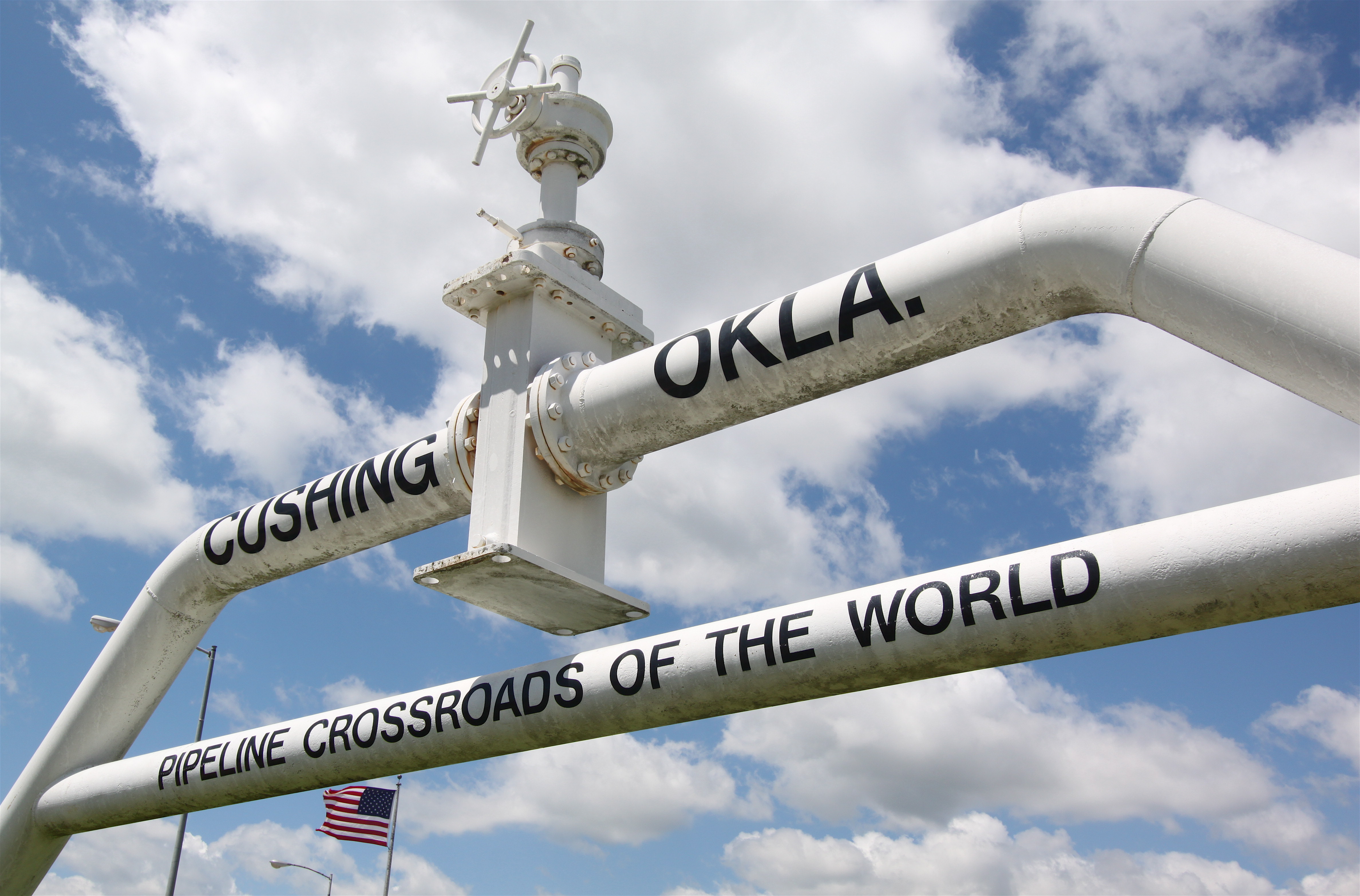Potential Cushing Bottleneck Could Increase U.S. Oil Discount
NEW YORK, June 14 (Reuters) – As the discount of U.S. crude to global benchmark Brent nears three-year highs, an emerging bottleneck at the key storage hub in Cushing, Okla., is making U.S. futures vulnerable to a drop, traders and analysts said.
Infrastructure constraints in the shale-rich Permian basin have already kept U.S. oil prices below international grades. Now, new constraints threaten to depress them even further and widen the gap between U.S. WTI and global benchmark Brent.

Pipelines are overwhelmed as U.S. crude production continues to hit new highs. The bulk of the record 10.9 MMbpd produced last week came from the Permian Basin of West Texas and New Mexico.
Permian barrels typically go to the Gulf Coast for refining or export, but those pipelines are full. More oil has thus started to flow to the storage hub of Cushing, where U.S. futures are priced.
As a result, northbound pipes, too, are nearing capacity. Cushing inventories may therefore start to rise, which, if it happens, could further widen the difference between WTI and Brent.
WTI is down 8% from its 2018 high while Brent slipped about 5% from its peak.
On Thursday, WTI traded as much as $10.25 below Brent earlier this month, the discount was as much as $11.57, its deepest since March 2015.
Raymond James said it expects a spread of $15 per barrel by the end of 2019 on North American output growth.
"The production growth in the U.S. is just going to continue to overwhelm the infrastructure buildout," said Vikas Dwivedi, global oil and gas strategist at investment bank Macquarie.
So far, the Cushing builds have not come as Midwest refiners process record amounts of crude to meet summer demand. Last week, inventories there fell 687,000 bbls to 33.9 MMbbls, according to government data.
For the week ending June 1, pipeline use from Cushing to the Gulf Coast was about 92%, data from market intelligence firm Genscape showed, compared with about 89% and 88% in April and May, respectively.
Canada, which produces heavy crude, is also ramping up production. As refiners are in search for "a similar spec Venezuelan crude," RBC Capital Markets said in a note, these heavier Canadian barrels are being prioritized over abundant light shale on Cushing pipelines.
The bottlenecks will likely remain until the end of 2019 or early 2020, when about 2.4 MMbpd of Permian-to-Gulf pipeline capacity is added, Tudor, Pickering, Holt & Co said in a note.
Related News
Related News

- Enbridge Plans 86-Mile Pipeline Expansion, Bringing 850 Workers to Northern B.C.
- Intensity, Rainbow Energy to Build 344-Mile Gas Pipeline Across North Dakota
- U.S. Moves to Block Enterprise Products’ Exports to China Over Security Risk
- Strike Pioneers First-of-Its-Kind Pipe-in-Pipe Installation on Gulf Coast with Enbridge
- 208-Mile Mississippi-to-Alabama Gas Pipeline Moves Into FERC Review
- U.S. Pipeline Expansion to Add 99 Bcf/d, Mostly for LNG Export, Report Finds
- A Systematic Approach To Ensuring Pipeline Integrity
- 275-Mile Texas-to-Oklahoma Gas Pipeline Enters Open Season
- LNG Canada Start-Up Fails to Lift Gas Prices Amid Supply Glut
- Strike Pioneers First-of-Its-Kind Pipe-in-Pipe Installation on Gulf Coast with Enbridge




Comments